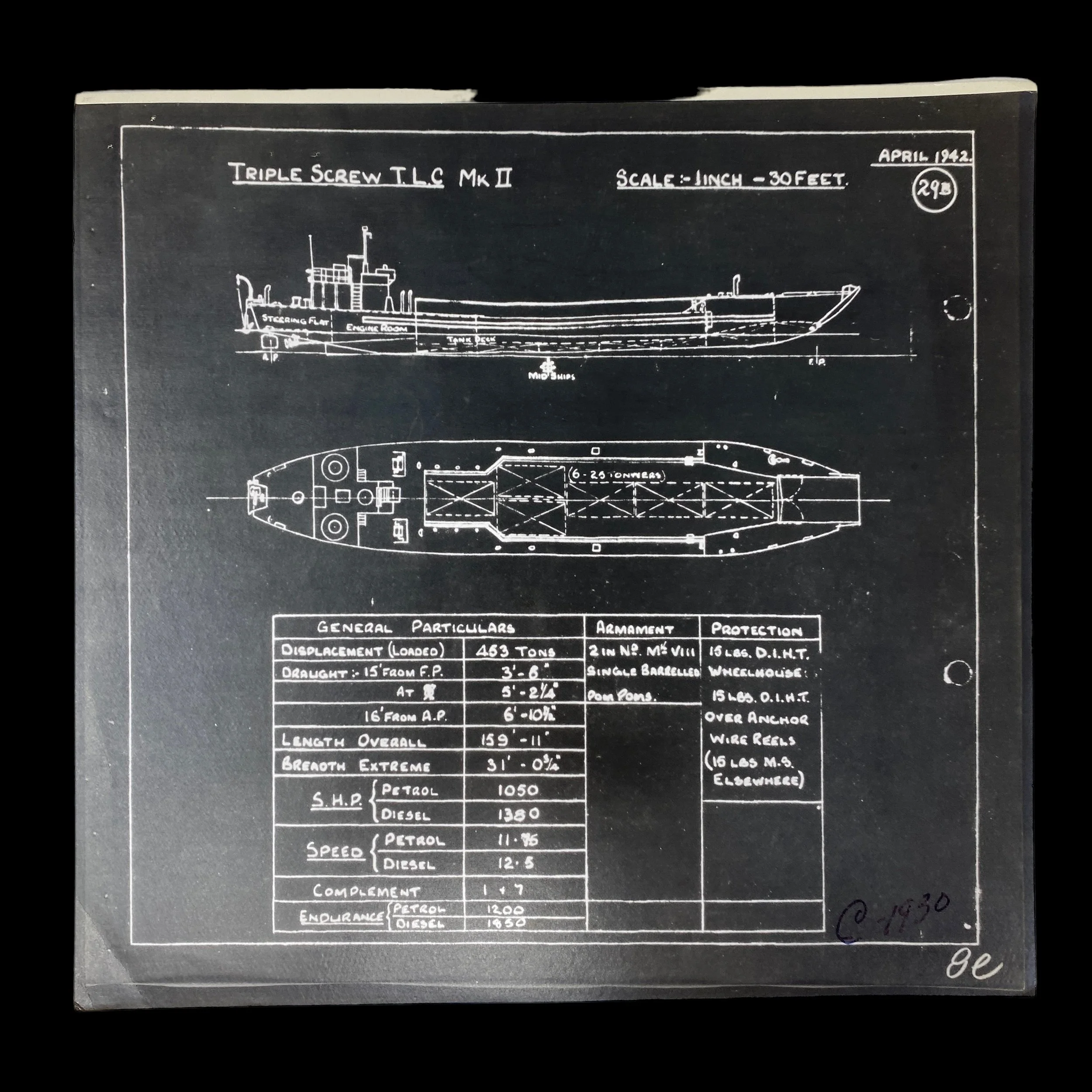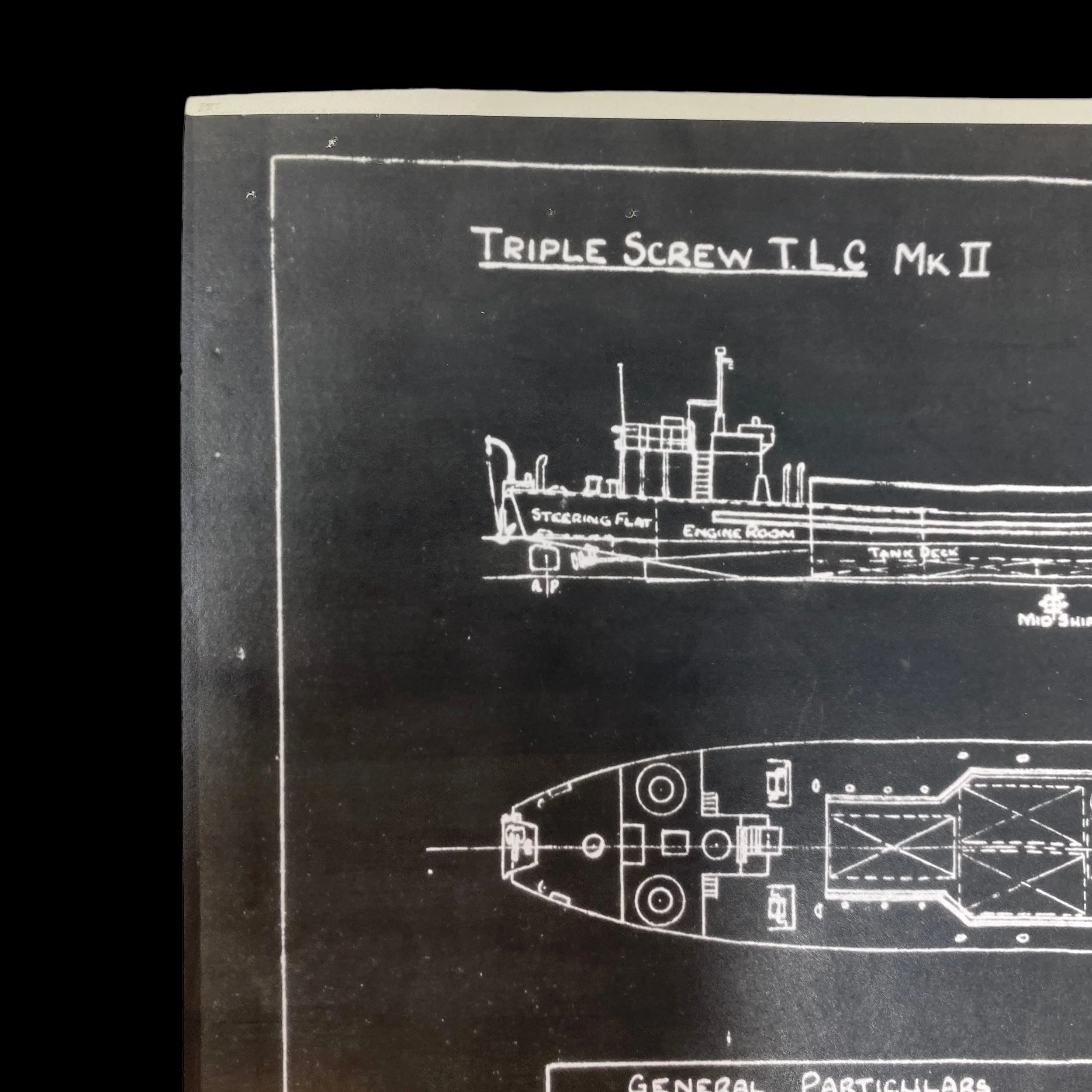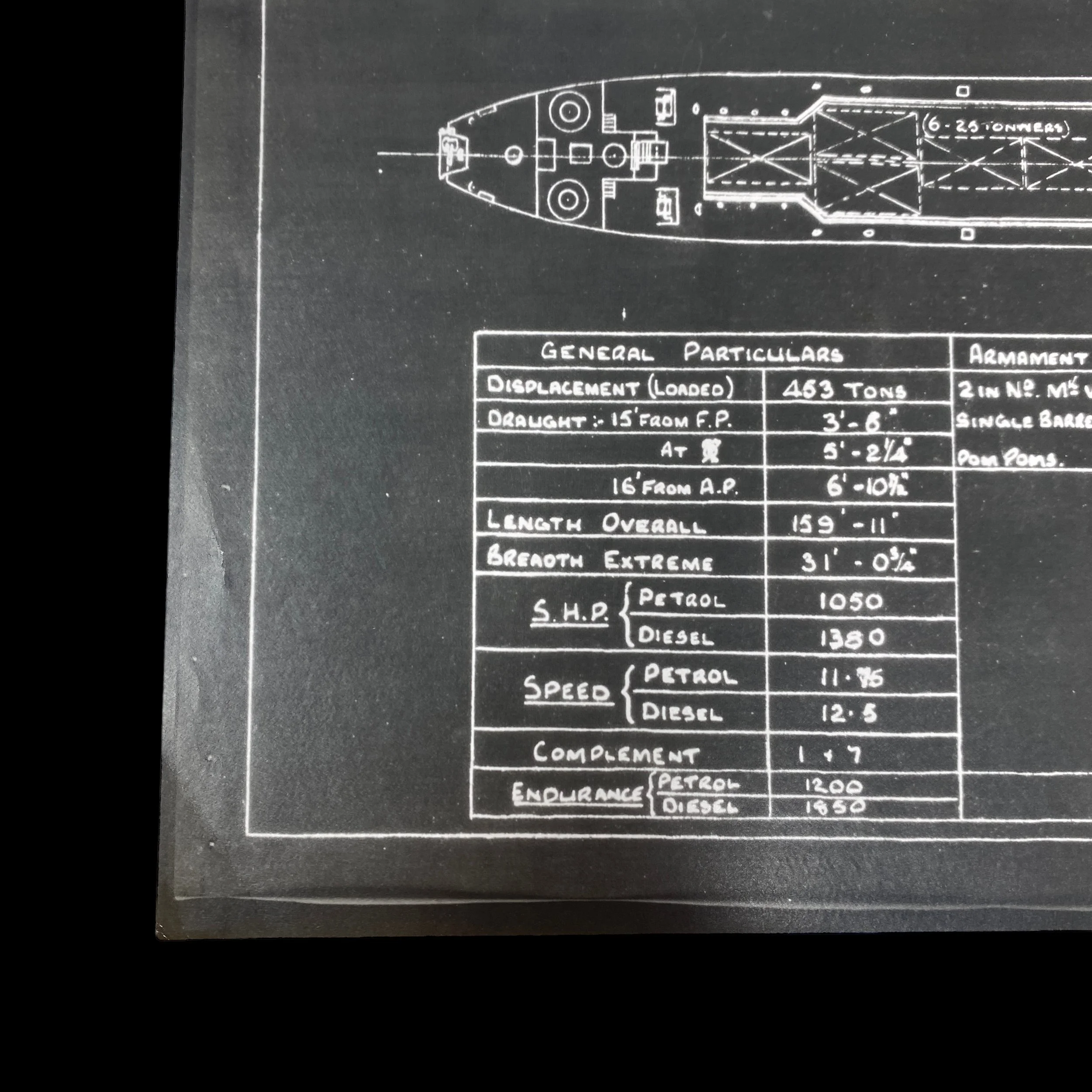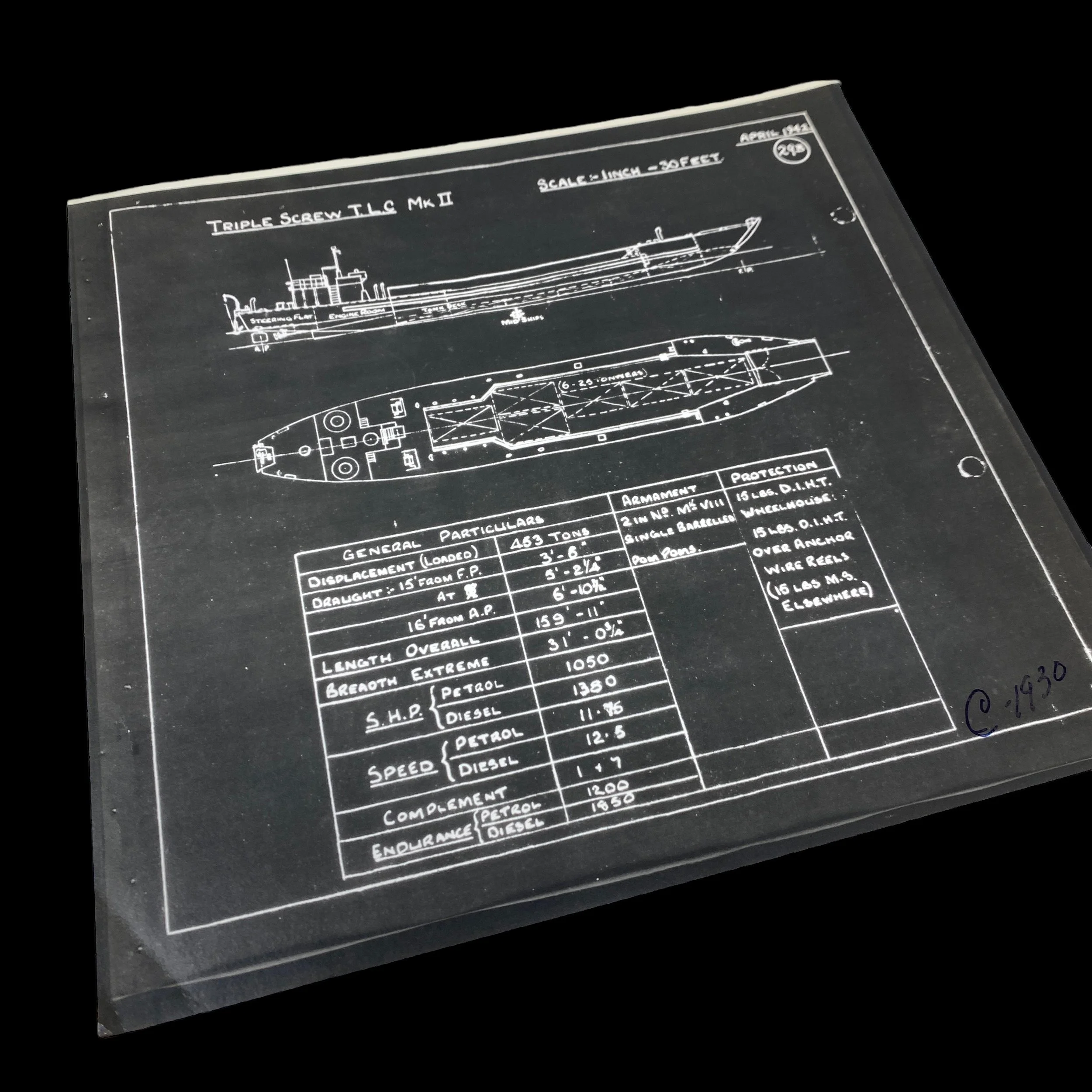RARE! Original WWII April 1942 Normandy D-Day British Landing Craft Tank Mark II Blueprint

















RARE! Original WWII April 1942 Normandy D-Day British Landing Craft Tank Mark II Blueprint
Comes with hand-signed C.O.A. and a full historical write-up
This incredibly rare and museum-grade original WWII British LCT Mark II blueprint diagram was used during the design, constriction, and repair of the LCT Mark II during World War II. Dated April 1942 this blueprint features detailed specs of the LCT during the design process. D-Day (June 1944): Perhaps the most famous use of the LCT Mark 2 was during the Normandy landings. These landing craft played a vital role in transporting Allied troops and equipment to the beaches of Normandy on June 6, 1944, marking the beginning of the liberation of Western Europe from German occupation.
World War II was a conflict marked by significant advancements in military technology and logistics. One of the innovations that played a crucial role in the Allied victory was the development of various types of landing craft. Among these, the British Landing Craft, Tank (LCT) Mark 2 was a remarkable piece of engineering that contributed to the success of numerous amphibious operations during the war.
The necessity for specialized landing craft became evident as early as the late 1930s when war clouds loomed over Europe. It was clear that a successful amphibious assault required vessels capable of carrying tanks, vehicles, and troops directly from ship to shore. While the British Royal Navy had some rudimentary landing craft prior to the war, the rapid expansion of the conflict prompted the development of more advanced and versatile models, leading to the creation of the LCT Mark 2.
Design and Specifications
The LCT Mark 2 was an innovative design that allowed for the transportation of tanks and other heavy vehicles from larger ships to shore. Its primary purpose was to land British tanks on enemy-held beaches during amphibious operations, making it a critical component of the Allied arsenal.
The LCT Mark 2 had a length of approximately 192 feet and a beam of 32 feet. The flat-bottomed hull was made of steel and featured a bow ramp that could be lowered to allow for the quick disembarkation of troops and vehicles. It had a crew of around 12 to 14 men, who operated the vessel and ensured the successful execution of the landing. Depending on the specific mission, the LCT Mark 2 could carry up to ten Churchill or Matilda tanks, or an equivalent amount of other heavy equipment.
The craft was powered by two diesel engines, which allowed it to reach a maximum speed of 8-10 knots. Its shallow draft and innovative design made it suitable for beaching, enabling it to discharge its cargo directly onto the shore without the need for port facilities. Additionally, it had a modest armament, typically consisting of anti-aircraft guns and machine guns, to provide some protection for the troops and equipment onboard.
Role in World War II
The LCT Mark 2 played a significant role in several critical operations during World War II. Some of the notable instances include:
Operation Torch (November 1942): The LCT Mark 2 was a key element in the Allied landings in North Africa. British and American forces used these landing craft to land troops, tanks, and supplies during the campaign to liberate North Africa from Axis control.
D-Day (June 1944): Perhaps the most famous use of the LCT Mark 2 was during the Normandy landings. These landing craft played a vital role in transporting Allied troops and equipment to the beaches of Normandy on June 6, 1944, marking the beginning of the liberation of Western Europe from Nazi occupation.
Operation Dragoon (August 1944): The LCT Mark 2 also saw service in the invasion of Southern France. This operation involved a complex amphibious assault, and the LCTs were instrumental in delivering troops and vehicles to the French coastline.
Pacific Theater: While the Pacific theater is often associated with larger landing craft, the LCT Mark 2 was used in various island-hopping campaigns to land troops and equipment on beaches in the Pacific, contributing to the Allied victory in that theater.
The LCT Mark 2's significance lies in its ability to provide the means for a successful amphibious assault. Without these landing craft, the Allies would have faced greater difficulty in landing heavy equipment and tanks on enemy-held shores, potentially prolonging the war and increasing casualties. The LCT Mark 2, along with other landing craft, helped level the playing field during beachhead assaults, giving the Allies a strategic advantage.
The legacy of the LCT Mark 2 extends beyond World War II. It marked a turning point in naval warfare, highlighting the importance of amphibious capabilities in modern conflicts. The lessons learned from the design and use of the LCT Mark 2 influenced the development of subsequent generations of landing craft and contributed to the evolution of modern amphibious operations.
In conclusion, the British LCT Mark 2 was a pivotal component of Allied success during World War II. Its innovative design and versatility in transporting tanks and troops to enemy-held shores were crucial in many major amphibious operations, including D-Day. Its legacy continues to influence modern amphibious warfare, and it stands as a testament to the ingenuity and determination of the Allied forces in their fight against tyranny during one of the most significant conflicts in history.